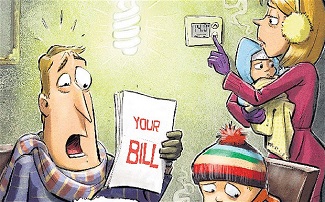Once the holidays are over and the new year arrives, many of us reevaluate our spending habits. The first things under the microscope are almost always the bills. You can sacrifice a few channels to lower your cable bill, but the utility bills are the real concern. During the Winter, keeping your home warm and toasty can send your electric bill off the charts. And, if your home isn’t sealed or insulated properly, the cash you pay for heat could be slipping through the cracks.
So, to help you improve your home’s energy efficiency and lower your bills, we put together a few tips for keeping the warm air in and the cold air out. In the sections below, we’ll focus on ways you can seal and insulate your windows, doors, attic and fireplace.
Windows and doors
Even when your doors and windows are closed, they can still let cold air in and allow warm air to escape– especially if they’re old and no longer form a tight seal. You can prevent unwanted airflow with a bit of plastic-based sealant. Pick up some silicone or polyurethane foam caulk (and a caulking gun if you don’t already have one) and apply it to the interior and exterior frames of your windows and doors.
Even after you seal up the frames, when it’s just the right temperature in your home, the areas near inefficient windows will be almost ten degrees cooler. In this case, it isn’t airflow but an un-insulated window pane that’s giving you the chills. Rather than cover your windows in heavy drapes, apply window film and retain your view and natural lighting. Almost all of our products are excellent insulators, but the Ecolux film will warm up your window seat to just one degree less than the rest of the room.
Attic
Climb up to your attic space and look for any missing or damaged insulation. Make the needed replacements and consider adding another layer. A dozen or so sheets of foam polystyrene plastic on top of your existing insulation would also do the trick. Next, check out the attic’s entry hatch. If it doesn’t seal well, apply foam plastic weather stripping to the perimeter to prevent heat loss.
Fireplace
While fireplaces are designed to heat a home, ironically, they can also let cold outdoor air creep in. If your chimney flue isn’t quite doing the job, you can use one of a few draft-stopping products available. Pick up a “chimney balloon” and inflate it until fills the inside of your chimney and blocks the cold airflow. Just don’t forget to remove it before you start your next fire.
You’ll also want to inspect your home’s other unheated areas, like the garage and basement, for leaks in the ductwork. These leaks can also be sealed with the plastic-based caulk you used on your doors and windows.
We want to help you make your home more efficient. Contact us today about energy saving window film, and lower your heating bills this Winter.
